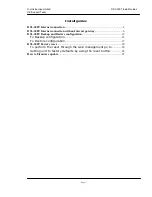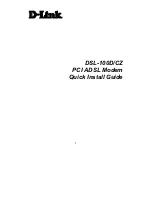
Page 10
www.versitron.com
Interface
SW1-2
SW1-3
Pin Number
Signal Designation
Color
1
RX+
Orange w/ White Line
2
RX
−
Orange
3
TX
−
Green w/ White Line
Normal Phase/Polarity
Off
Off
6
TX+
Green
1
RX
−
Orange w/ White Line
2
RX+
Orange
3
TX+
Green w/ White Line
Inverted Phase/Polarity
On
On
6
TX
−
Green
TABLE 8: (J5) RS-485 / RS-422 DATA TRANSMISSION WIRING
Pin Number
Signal Designation
Color
1
Not Used
2
RX
−
Yellow
3
RX+
Green
4
TX+
Red
5
TX
−
Black
6
Not Used
TABLE 9: (J6) COPPER INTERFACE WIRING
2.5.1
Fiber Optic Cable Installation
After the electrical and digital interface cables have been wired according to paragraphs 2.4 and 2.5,
attach the fiber optic cable to the F270X. The transmitter module of each unit should be connected to the
receiver module of the other unit. That is, the transmitter optic of the exchange side Modem, F270X, should be
connected to the receiver optic of the subscriber side Modem, F271X. On the other hand, the F271X
transmitter optic should be connected to the F270X receiver optic.
2.6
INITIAL CHECKOUT PROCEDURE
F270X Series Modems contain no power on/off switch. Once properly installed and power is applied it
should be fully operational. The power indicator should remain on as long as power is supplied to the unit.
Before beginning system operation check the following to verify proper installation:
1.
Verify that the power plug is seated fully into the Modem or into the rack mount enclosure.
2.
Verify that the fiber cable is crossed transmit to receive from unit one to two and two to one.
3.
Verify that the alarm LED goes out when the signal is applied to the optical receiver of the F270X, or when
4-wire UTP is connected between the F270X and F271X in a copper network application.
4.
Verify the switch settings for the circuit configuration. (i.e. copper or fiber optic network interface).
If a malfunction is detected during the initial checkout procedure, refer to Section 5 for information on
isolating the malfunction in the unit.






































